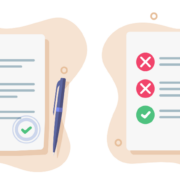Most Valuable Answers to Common MPRE Questions
Most Valuable Answers to Common MPRE Questions
Yes, it’s true — in most jurisdictions, you need to take another exam in addition to the bar exam to obtain your law license. The Multistate Professional Responsibility Examination (MPRE) is a 60-question multiple-choice exam offered three times a year. The MPRE measures an examinee’s knowledge of the standards of professional conduct by lawyers. After reading this article, you will have an understanding of the particularities of the exam, what to weigh when deciding when to take the exam, and other vital points to know about before heading into the MPRE.
Most Valuable Answers to Common MPRE Questions
1. Can you take the MPRE in any jurisdiction?
This is a very common question. The answer is yes! To help explain, think of this example: if you are going to law school in the District of Columbia but want to sit for the New York bar exam, do you need to go to New York to sit for the MPRE? No, you don’t. You can take the MPRE in any jurisdiction. The MPRE is administered by the National Conference of Bar Examiners, so the test is the same whether you take the MPRE in New York or the District of Columbia.
What is essential is ensuring that you select the correct jurisdictions where you would like your score reported. In our earlier example, you would choose New York as a reporting jurisdiction. Also, it is important to keep in mind that what is considered a passing score varies by jurisdiction, as helpfully charted in the National Conference of Bar Examiners (NCBE) Uniform Bar Exam Jurisdictions MPRE chart and Non-Uniform Bar Exam Jurisdictions chart. In New York, a passing MPRE score is 85, while in the District of Columbia, a passing MPRE score is 75.
Another critical piece of information you should know when deciding where to take your MPRE and where to report your MPRE score is whether those jurisdictions require that you pass the MPRE before an you sit for the bar exam. In our example, neither New York nor the District of Columbia requires a passing MPRE to sit for the bar exam. Read through JD Advising’s Where Should I take the MPRE? post for more information on this question.
2. How many times can you take the MPRE?
This post would not be a listing of valuable answers to common MPRE questions if this question was not addressed. The limit does not exist! This is very different than the bar exam, where some jurisdictions have limitations on how many times an examinee can take the bar exam. There is no such limitation for the MPRE. Additionally, if you fail the MPRE, no one will know unless you tell them! The NCBE does not publish a pass list for the MPRE.
However, there are some things you should consider when preparing for the MPRE and in determining when to take the MPRE. First, failing the MPRE (especially if taking the MPRE right before you begin studying for the bar exam) can cause additional anxiety as you study for the bar exam. Second, failing the MPRE can cause a delay in the process to obtain your license to practice law. Keep these items in mind and plan ahead! Check out JD Advising’s post on How Many Times Can You Fail the MPRE? for more details.
3. Do you have to pass the MPRE before you take the bar exam?
Like with many questions posed to attorneys, the answer here is “it depends.” While the questions on the MPRE are the same in even jurisdictions, the ways in which the MPRE is regarded is state-specific. First, the passing score for the MPRE varies among states. The lowest score accepted by any state is 75, and the highest score required by any state is 86. Check out the NCBEs’ Uniform Bar Exam Jurisdictions MPRE chart and Non-Uniform Bar Exam Jurisdictions chart for additional information.
Second, timing related to the MPRE also varies and can also be compared using the NCBE charts linked above. Some states provide a timeframe after the bar exam during which the examinee must have passed the MPRE. Other states, like Iowa, require the examinee to have a passing MPRE score before the examinee is allowed to sit for the bar exam. Finally, some states have no specific timing requirement for MPRE passage. Keep in mind that you cannot be sworn into the bar without a passing MPRE score in most jurisdictions, with the exception of Wisconsin and Puerto Rico.
However, we recommend that you prepare for and take the MPRE before you take the bar exam! By finishing the MPRE before you take the bar exam, you will avoid significant potential stress. For example, if you don’t pass your MPRE the first time, taking the MPRE early in law school gives you more time to take it again before the bar. Check out JD Advising’s When Is the Best Time to Take The MPRE? for more discussion on the pros and cons of when to take the MPRE.
4. Does the MPRE score expire?
Another classic question on a future lawyer’s mind. It depends! Each jurisdiction sets its own rules for whether a score obtained on the MPRE expires. If the MPRE does expire, each jurisdiction also determines the timeframe for the validity of the MPRE results. For example, the District of Columbia’s Committee on Admission states that the MPRE score does not expire. However, the New York State Board of Law Examiners states that the MPRE score expires after 4 years from the date the examinee sat for the MPRE.
The NCBE provides a helpful chart detailing this information across all jurisdictions. If you plan to gain admission into a jurisdiction to which you did not send your MPRE score, you should be aware of how long MPRE results are valid in your current jurisdiction and in the new jurisdiction, as well as what is considered a passing score in the new jurisdiction. This will help to prevent a situation where your MPRE scores cannot transfer.
5. How is the MPRE graded?
The MPRE has 60 questions. Fifty of those questions are scored, while 10 are “test” questions. The MPRE is scored differently for each administration, so there is no specific raw score needed to pass. However, the good news is that scoring has not changed much from administration to administration.
The general score range on the MPRE is between 50 and 150. So how many questions does an examinee need to answer correctly to pass? Well—it depends! Based on data provided by the NCBE, which we discuss in our post, How is the MPRE Scored?, examinees should aim to get between 30 and 35 of the questions correct to pass.
However, data on the historical scoring of the MPRE does show something important: each question matters. In our post How Many Questions Do You Need to Get Right to Pass the MPRE?, we discuss how two questions can make a difference between passing or failing the MPRE! This is because correctly or incorrectly answering two questions can be the difference between a 75 and an 85—the difference between passing and failing in some jurisdictions. If you are scoring between 30 and 35 correct responses, you are likely passing. But if you’re struggling to get that many correct responses, it may be worth it for you to spend more time studying for the MPRE to ensure you pass. JD Advising has several valuable and free MPRE study resources for you to use!
6. How long is the MPRE?
The MPRE is a two-hour exam with 60 multiple-choice questions. Two hours might seem like a long time, but it may not feel like much when you’re taking the exam. To combat feeling unsure about the timing, it is important to complete practice MPREs under timed conditions and in an exam-like setting. Treat practice MPREs like they are the real deal—no cellphones, no music, and no distractions! This will help you understand your pacing—are you moving too quickly or too slowly through the exam?
Another valuable tip for managing your time during the MPRE is to break up your two hours into sections. There are 60 questions and 120 minutes—this leaves approximately 2 minutes for each question. Keep in mind that not all questions will take you the full 2 minutes, and some questions may take you more than 2 minutes. Breaking this down into a metric you can use to estimate if you are behind or not is to try to have 15 questions done every half hour. If there is an hour left of the exam and you’ve only answered 20 questions, you will know that you’re roughly 10 questions behind where you should aim to be.
Remember that breaking up your time may look different for each test-taker. Maybe you know you can answer all 60 questions in an hour and a half, and you want to use the last half hour to review your responses. In this scenario, you would want to calculate how many questions you would need to complete in 90 minutes instead of 120 minutes. Customize this tip to make it most useful to you!
7. Can you take bathroom breaks during the MPRE?
Yes! But there are no scheduled breaks during the MPRE. This means that to take a break, you will have to raise your hand and let a Test Administrator at the exam facility know. Also, the timer will not be paused while you take an unscheduled break. So, make sure to plan ahead accordingly!
When you leave the testing room for an unscheduled break, you will need to take your ID with you. And you will not be allowed to leave the testing facility or access the area where your personal items are stored. When you leave and return to the testing room, the Test Administrator will look at your ID to ensure security.
Because tests like the MPRE and the bar exam are intentionally meant to be highly secure, it is important that you get familiar with what to expect at the facility and on the day of the test. Take some time to review the National Conference of Bar Examiners’ useful guide to exam day.
8. What is it like taking the MPRE at the Pearson VUE testing center?
All MPRE tests are administered at Pearson VUE testing centers. To familiarize yourself with the facilities, Pearson VUE offers photos and additional information. Additionally, Pearson VUE provides an interactive tutorial that you can take, which simulates what taking the test at a Pearson VUE facility is like.
You will be required to present two original forms of identification when you arrive at the Pearson VUE testing center. Failure to have and present both forms of acceptable ID may restrict you from taking the MPRE on the date for which you registered. Before you enter the testing room at the Pearson VUE facility, the Test Administrator will collect your digital signature and a digital photograph to verify your identity. Additionally, you will be required to sign the NCBE Candidate Rules Agreement, which is available here for your review.
Similarly, being more than 15 minutes late to the Pearson VUE center may impact your ability to sit for the MPRE. For more information about appropriate forms of ID and other entrance requirements, check out the NCBEs’ valuable exam day tips!
9. When and how will you get your results?
This wouldn’t be a guide containing the most valuable answers to common MPRE questions if we didn’t touch on the MPRE results! Like with most things MPRE, it depends! Generally, MPRE scores are released 5 weeks after exam day. Sometimes, scores are calculated even sooner (within 4 weeks). Check out our How long does it take to get MPRE results? article for additional timing information.
As to how you will get your results, they are posted on the NCBE File Cabinet associated with your account. Results are maintained there until the next MPRE administration. Therefore, you should save your results as soon as you can!
JD Advising has many valuable MPRE prep resources available at no cost as well as blog posts to address your frequently asked MPRE questions. Be sure to use our resources to give yourself an advantage on the MPRE!
Looking to Ace the MPRE?
- Enroll in our 5-star rated free MPRE Course, complete with expert guidance, an exclusive outline, practice questions, and a one-sheet.
- Tackle the Real MPRE questions — the gold standard for test preparation.
- Elevate your preparation with personalized MPRE private tutoring, featuring a tailored study plan and dedicated MPRE outline.
- Dive into our assortment of complimentary top-notch MPRE resources for your success.








Leave a Reply
Want to join the discussion?Feel free to contribute!